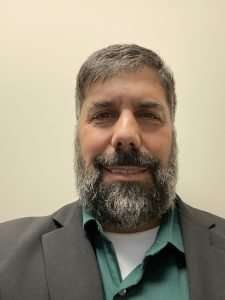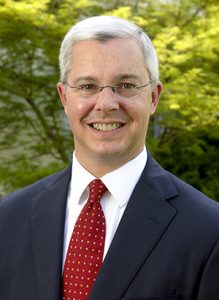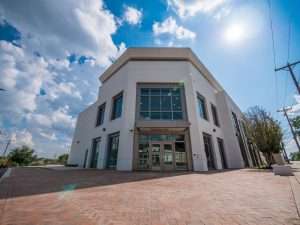
Oct 21, 2020 | Staying on Top, UpstateVibe365

Kenneth Moon, Deputy Director Cherokee County Development Board
Q: When the impact from the pandemic started to hit in March and April, what did you do to touch base with manufacturers and employers in Cherokee County?
A: We quickly reached out to every industrial company in the county. We gave them every bit of information we had to help them weather the storm.
Q: What were their initial concerns and were you able to help address them? Have you seen those evolve over the last six months?
A: Most companies were interested in the process to be deemed essential if the governor decided to close down manufacturing. As time went by, concerns turned to unemployment compensations. An overwhelming number of employers had trouble getting employees to come back due to the extra $600 a week people were receiving on unemployment. They were also concerned with the lack of support they received from DEW Unemployment. Companies were reaching out for help to get people to come back to work, but the DEW system was overwhelmed, and appeals were taking months. Many employers were frustrated as they felt the DEW was not being responsive.
Q: Have there been any issues that were a major surprise?
A: The major issue we experienced in Cherokee County concerned unemployment.
Q: Have you continued to be in-touch with your employers? How important has communications been during this time?
A: Yes, we continually contact employers to ensure they are doing well. Communications have been very important to ensure timely and quality information is given to employers. So far, we have had an accurate assessment on the impacts.
Q: Like in most counties, the unemployment rate in Cherokee County rapidly increased at the start of the pandemic. What is being done in the county to get people back to work?
A: Cherokee County unemployment numbers were so high because of retail and restaurants. Cherokee is a small rural county has an unusually large about of both. The number came down significantly once the restaurants and small retail stores were allowed to open.
Q: There has been discussion about companies wanting to bring manufacturing, especially related to PPE and medical devices, back to the US to reduce supply chain issues. Have you seen an uptick in interest for manufacturers potentially coming to Cherokee County?
A: Cherokee County manufacturing pivoted and many started to produce PPE. Carolina Cotton Works, Parkdale Mills, Wedel Fabrics and Hamrick Mills to name a few. I believe we will continue to see an uptick in production from existing industries.
Q: Are there any issues that you knew needed to be addressed before the pandemic that have been magnified by the pandemic? If so, what are they and are there opportunities for addressing them now?
A: Before the pandemic, an issue that needed to be addressed in our county was workforce training. Once the pandemic hit, a lot of untrained/unskilled workers for retail and service tried to move into manufacturing and warehousing. None had training which caused more issues for industries.
Q: Are there adjustments you have seen employers in Cherokee County make during the pandemic that you think will continue long-term?
A: The pivot to making PPE is one of the adjustments that we foresee continuing into the long-term. Also, many industries here have increased their pay during this time to give pandemic raises of $2-$3 more per hour. The industry is realizing that they get better quality employees when their wages are aligned with the growing industrial base.
 Q: Are there any “silver lining” impacts from the pandemic that you think will turn out to be a positive for Cherokee County in the long-term?
Q: Are there any “silver lining” impacts from the pandemic that you think will turn out to be a positive for Cherokee County in the long-term?
A: There are no foreseen “silver lining” impacts from the COVID-19 pandemic that will turn out to be a positive for Cherokee County in the long term.

Oct 14, 2020 | Staying on Top, UpstateVibe365

Catherine Schumacher, President & CEO of Public Education Partners
With everything that teachers have had to endure over the past six months, we should all take time to thank them. Educators, the Greenville County Schools administration, and a wide range of individuals and organizations are working day in and day out to improve educational outcomes for Greenville’s children while also prioritizing everyone’s safety.
Gratitude is powerful. As Brené Brown’s hundreds of thousands of followers will attest, cultivating a sense of gratitude can actually rewire your brain so that you are more capable of navigating the toxic stress of our 21st Century lives. Or, more to the point, the toxic stress of 2020.
Back in March, I was invited to share my thoughts on how the pandemic was impacting public schools, especially here in Greenville County, where since 1985 Public Education Partners (PEP) has led collective efforts to improve student achievement. Gratitude was the central theme. I closed that article with three pleas: Be well. Stay safe. Thank a teacher.
Six months later, those words still apply. If anything, they are more relevant. Millions of our fellow citizens have gotten sick, hundreds of thousands have died, and the long-term health and economic repercussions remain hard to predict. Tens of thousands of Upstate public school students, teachers, and families are navigating a complex mix of learning options — none of which is perfect for everyone, and all of which require significant sacrifice and patience. Sadly, those traits seem in short supply right now.
In light of all of this, teachers have embodied the resiliency and creativity that they strive to model for their students. The much-needed summer break was consumed by online trainings, lesson plan adaptations, and building virtual teaching studios in living rooms and kitchens. Since August, classrooms have become production centers for online learning sessions, and carefully designed spaces where children can come together in-person to safely learn with their peers.
In all of this, teachers’ responsibilities have continued to grow. They respond to emails in the middle of the night, talk caregivers and students through using new technologies, and worry about the children who aren’t transitioning well. They do all of this while exposing themselves to a virus that we still don’t know everything about, trusting that their principals and administrators have their backs and are doing everything possible to keep both them and their students safe.
 At PEP, we are committed to elevating the voices of teachers whenever possible. They are the experts, just as scientists are the experts when it comes to issues of Covid-19. But they are also human. They are our parents, our friends, our partners. Parishioners in our churches or neighbors down the street. Greenville County Schools alone employees 6,000 teachers — a significant workforce that is woefully and systematically underpaid, and whose voices are not listened to enough by the elected officials that continue to kick the can of education and funding reform down the road.
At PEP, we are committed to elevating the voices of teachers whenever possible. They are the experts, just as scientists are the experts when it comes to issues of Covid-19. But they are also human. They are our parents, our friends, our partners. Parishioners in our churches or neighbors down the street. Greenville County Schools alone employees 6,000 teachers — a significant workforce that is woefully and systematically underpaid, and whose voices are not listened to enough by the elected officials that continue to kick the can of education and funding reform down the road.
We know that the road to economic recovery may be long, but I hope that we will agree that the overwhelming burden cannot be carried on the backs of our public education system alone. In the wake of the Great Recession, K-12 education funding was cut by 20%. It took 12 years to return to pre-recession levels – just in time to welcome a global pandemic.
Early next year, our General Assembly will convene in Columbia for its next two-year session. It is impossible to predict where we will be by then, but it is clear that to lay the groundwork for a lasting recovery, we must prioritize investing all the resources we can muster in our teachers and public schools. South Carolina was already facing a teacher recruitment and retention crisis of unprecedented proportions, which this pandemic will undoubtedly exacerbate. We need data-centered strategies and strong leadership.
Advocates for public education must be ready to make their voices heard. You can start by learning which candidates fighting for your vote on November 3rd are true champions for public education. Critically, get to know the candidates for your local school board election. In Greenville, six of the 12 school board seats are on the ballot this year, and PEP has a School Board Questionnaire to help you learn more about the candidates. We also encourage you to sign-up for our Action Alerts, which will keep you informed on critical education issues and make action easy.
I’m so grateful for the teachers that my two boys have every year, but especially this year. So in their honor: Be well. Stay safe. Thank a teacher. And you can start with your choices at the polls.
Catherine Schumacher
President & CEO
Public Education Partners
Public Education Partners (PEP), founded in 1985, leads our community in acting collectively to support, strengthen, and advance public education and student achievement in Greenville County Schools. To that end, its work focuses on Elevating Teachers, Empowering Advocates, and Engaging Communities.

Oct 14, 2020 | Staying on Top, UpstateVibe365

Zeb Gantt, Community Research & Data Specialist
United Way of Greenwood & Abbeville Counties, in collaboration with local, state and national partners, is pleased to announce the successful launch of a new data platform. Greenwood Counts (www.greenwoodcounts.org) provides access to population health data, demographics, evidence-based practices, and information on vital resources and activities. The platform provides governments, health departments, hospitals, educational institutions, community-based organizations and human service providers with the resources needed to facilitate regional and community improvement activities and strengthen collaborations, both locally and regionally.
Using Greenwood Counts, individuals and organizations can view over 140 health and quality of life data indicators; map and visualize data, and generate tailored data reports; examine zip-code level maps of socio-economic needs; browse through a database of over 2,000 evidence based practices and programs; access zip code specific pages with local data, priorities, improvement activities, and resources; track progress towards county and regional goals and use tools for creating a community health needs assessment.
“Our vision for Greenwood Counts was to provide Greenwood County with a vital resource to support community improvement work in the region. We are eager to make the site scalable and replicable for other surrounding counties in the future, as this would enable the region to come together collectively to formulate shared goals. This new platform will engage diverse stakeholders, help pinpoint at-risk populations and areas of need, promote the implementation of programs proven to affect change, and provide tools to track and report on results at the zip code, county, and regional levels,” says Zeb Gantt, Community Research & Data Specialist, United Way of Greenwood & Abbeville Counties.
Having successfully launched, Greenwood Counts is now transitioning into building a community consortium. “The Greenwood Counts Community Consortium is being developed with one goal in mind, bringing representatives from across multiple sectors to advocate and advance system changes for a safer, healthier and happier community. The Consortium will drive conversations on how Greenwood plans and coordinates services and will serve as advisors for governments and community leaders,” says Marisel Losa, President & CEO, United Way of Greenwood and Abbeville Counties.
 The Consortium will address our community’s greatest needs utilizing the resources of Greenwood Counts. The platform will serve as the data backbone for decision making through its easy-to-use navigation tools for supporting community improvement work. It will enable the Consortium to understand Greenwood’s greatest needs and track the progress towards remedying those needs overtime.
The Consortium will address our community’s greatest needs utilizing the resources of Greenwood Counts. The platform will serve as the data backbone for decision making through its easy-to-use navigation tools for supporting community improvement work. It will enable the Consortium to understand Greenwood’s greatest needs and track the progress towards remedying those needs overtime.
For more information on Greenwood Counts and the Greenwood Counts Community Consortium, please visit: www.greenwoodcounts.org

Oct 9, 2020 | Staying on Top, UpstateVibe365

Kyra Lobbins, Deputy Chief of Staff, Clemson University
Welcome Terence Roberts, TATT Chairman
Guest Presentation Kyra Lobbins, Deputy Chief of Staff, Clemson University
You can watch a recording of the meeting here.
6,800 students living on campus in the third week of classes
Masks are required on campus and in the city of Clemson
COVID testing percent positive is well below the state average
Clemson tested all students initially, now just on campus
Wastewater is being used to target testing; can pinpoint down to a floor in a dormitory
350 of 629 isolation beds being used; extending to 750 beds
207 students are isolating independently
Marketing research has showed that Clemson should thrive post-pandemic
All finals will be held online
When vaccine becomes available it will be provided to students
TATT Updates Dean Hybl, TATT Executive Director
Creating Upstate Unsung Heroes Virtual Event on November 18
- Register and nominate your Unsung Hero here.
Other events coming up
- Upstate Entrepreneur Ecosystem Workshop
- Sneak Pique
- Upstate Professional Planners Workshop
- Air Quality Group
- Creating a Safer Upstate Discovery Committee Meeting
Cherokee (Frannie Stockwell, Cherokee County Chamber of Commerce)
Businesses are getting back up and running slowly with some new openings and some closings
Elementary schools are back in person five days a week
The city passed a mask ordinance for employees and customers yesterday
The Chamber is hosting an in-person job fair on October 19
New Cherokee County vision 20/37 “A Clear Vision”
Pickens (Katie Mann, Hagood Mill)
Hagood Found took over day to day operations from Pickens County last year
Many events cancelled but many things still happening including grist mill 175 year celebration, Rural LISC digital inclusion grant to rural communities for local rural communities to provide funding support for those who cannot afford computers or internet www.hagoodmillhistoricsite.com
State sanctioned fiddling competition this month and next month is Native American Heritage Month celebration
Spartanburg (Doug Stephenson, SC Works Greater Upstate
One stop operator for SC Work Centers offering support to employers
Closed five centers mid-March due to COVID, started service by phone, virtually, email, etc.
Developed PPP and safety protocol with many donations from counties and local organizations
Centers reopened to people needing unemployment compensation
Several virtual job fairs have been held over the past months with one upcoming in Spartanburg
Greenville: 2325 in-person customers, Union 692, Cherokee: 1862; Spartanburg 4844
Union (Jami Trammell, Union County Chamber of Commerce)
New businesses have started with more in the pipeline
Have cancelled several events but still planning on Christmas parade
Hosting a drive-in movie
More new chamber members than ever before

Oct 6, 2020 | Staying on Top, UpstateVibe365

Troy Hanna, President & CEO of Spartanburg County Foundation
Construction is complete for the Robert Hett Chapman III Center for Philanthropy, the first center for philanthropy in the state of South Carolina.
The Center is a state-of-the-art hub for people to gather, analyze data, and share ideas for solutions to Spartanburg’s critical indicators. It will be a place where donors, nonprofits, and community groups meet and collaborate. It will also offer access to research and innovative tools for building the organizational capacity of Spartanburg nonprofits.
It was just over a year ago that The Spartanburg County Foundation hosted a groundbreaking ceremony for The Robert Hett Chapman III Center for Philanthropy. Over 150 community members and distinguished guests attended this landmark event.
“Our groundbreaking ceremony represented more than just breaking ground on the Center for Philanthropy,” said Mary Thomas, Chief Operating Officer. “We broke ground on the future of philanthropy in South Carolina and introduced a first-of-its-kind facility that will generate change not only in Spartanburg County but also throughout the state.”
The Center allows The Spartanburg County Foundation, its partners, nonprofits, and community leaders to move the needle on critical issues facing Spartanburg in an innovative, collaborative space designed to spark ideas and facilitate action around data-driven solutions to address the challenges that we all care about as a community. The Center will allow the Foundation to enhance the donor experience and proactively connect them to its program of work.
 The Center meets the need for a flexible meeting and convening space in Spartanburg for nonprofits, other funders, and a multitude of organizations whose mission is to improve the lives of people in our county. “The Center for Philanthropy is all about Spartanburg and how we build a legacy and community here,” Thomas said. “We want people to naturally gather in the Center.”
The Center meets the need for a flexible meeting and convening space in Spartanburg for nonprofits, other funders, and a multitude of organizations whose mission is to improve the lives of people in our county. “The Center for Philanthropy is all about Spartanburg and how we build a legacy and community here,” Thomas said. “We want people to naturally gather in the Center.”
Nonprofits will benefit from the Resource Media Room, an innovative learning space that will offer access to research and tools to strengthen an organization’s ability to fulfill its mission over time. The building will incorporate interactive technology, especially in the Gallery of Philanthropy, where stories of giving back will be featured in one of the many planned exhibits.
“The critical work that will be seen in the Center is already happening today,” said Troy Hanna, President and CEO. “This Center is not about a building, but the people who embody that work every day to shape our community’s future.”
Though the physical doors of the Robert Hett Chapman III Center for Philanthropy have not yet been opened to the community, the Center is already making a difference in the Spartanburg community. Through the Center for Philanthropy brick paver campaign, people can support disaster relief, including crucial COVID-19 assistance in Spartanburg County. Personalized, commemorative bricks are available to anyone interested in supporting The Spartanburg County Disaster Relief Fund and leaving a lasting, permanent mark on The Robert Hett Chapman III Center for Philanthropy.
 “Through these brick pavers, the Center for Philanthropy is already able to connect to the community and support Spartanburg County through disaster relief,” said Troy Hanna, President and CEO of The Spartanburg County Foundation.
“Through these brick pavers, the Center for Philanthropy is already able to connect to the community and support Spartanburg County through disaster relief,” said Troy Hanna, President and CEO of The Spartanburg County Foundation.
Learn more about the Robert Hett Chapman III Center for Philanthropy and brick pavers on the Foundation’s website at spcf.org.


 Q: Are there any “silver lining” impacts from the pandemic that you think will turn out to be a positive for Cherokee County in the long-term?
Q: Are there any “silver lining” impacts from the pandemic that you think will turn out to be a positive for Cherokee County in the long-term?


 At PEP, we are committed to elevating the voices of teachers whenever possible. They are the experts, just as scientists are the experts when it comes to issues of Covid-19. But they are also human. They are our parents, our friends, our partners. Parishioners in our churches or neighbors down the street. Greenville County Schools alone employees 6,000 teachers — a significant workforce that is woefully and systematically underpaid, and whose voices are not listened to enough by the elected officials that continue to kick the can of education and funding reform down the road.
At PEP, we are committed to elevating the voices of teachers whenever possible. They are the experts, just as scientists are the experts when it comes to issues of Covid-19. But they are also human. They are our parents, our friends, our partners. Parishioners in our churches or neighbors down the street. Greenville County Schools alone employees 6,000 teachers — a significant workforce that is woefully and systematically underpaid, and whose voices are not listened to enough by the elected officials that continue to kick the can of education and funding reform down the road.

 The Consortium will address our community’s greatest needs utilizing the resources of Greenwood Counts. The platform will serve as the data backbone for decision making through its easy-to-use navigation tools for supporting community improvement work. It will enable the Consortium to understand Greenwood’s greatest needs and track the progress towards remedying those needs overtime.
The Consortium will address our community’s greatest needs utilizing the resources of Greenwood Counts. The platform will serve as the data backbone for decision making through its easy-to-use navigation tools for supporting community improvement work. It will enable the Consortium to understand Greenwood’s greatest needs and track the progress towards remedying those needs overtime.



 The Center meets the need for a flexible meeting and convening space in Spartanburg for nonprofits, other funders, and a multitude of organizations whose mission is to improve the lives of people in our county. “The Center for Philanthropy is all about Spartanburg and how we build a legacy and community here,” Thomas said. “We want people to naturally gather in the Center.”
The Center meets the need for a flexible meeting and convening space in Spartanburg for nonprofits, other funders, and a multitude of organizations whose mission is to improve the lives of people in our county. “The Center for Philanthropy is all about Spartanburg and how we build a legacy and community here,” Thomas said. “We want people to naturally gather in the Center.” “Through these brick pavers, the Center for Philanthropy is already able to connect to the community and support Spartanburg County through disaster relief,” said Troy Hanna, President and CEO of The Spartanburg County Foundation.
“Through these brick pavers, the Center for Philanthropy is already able to connect to the community and support Spartanburg County through disaster relief,” said Troy Hanna, President and CEO of The Spartanburg County Foundation.